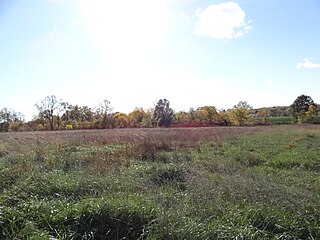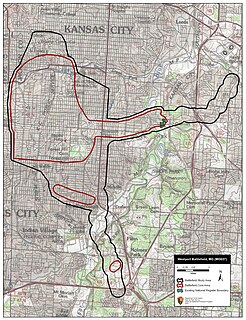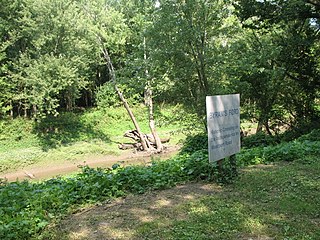
The Kansas City Star is a newspaper based in Kansas City, Missouri. Published since 1880, the paper is the recipient of eight Pulitzer Prizes. The Star is most notable for its influence on the career of President Harry S. Truman and as the newspaper where a young Ernest Hemingway honed his writing style. The paper is the major newspaper of the Kansas City metropolitan area and has widespread circulation in western Missouri and eastern Kansas.

The New York World-Telegram, later known as the New York World-Telegram and The Sun, was a New York City newspaper from 1931 to 1966.

The Star Tribune is the largest newspaper in Minnesota. It originated as the Minneapolis Tribune in 1867 and the competing Minneapolis Daily Star in 1920. During the 1930s and 1940s Minneapolis's competing newspapers were consolidated, with the Tribune published in the morning and the Star in the evening. They merged in 1982, creating the Star and Tribune, and it was renamed to Star Tribune in 1987. After a tumultuous period in which the newspaper was sold and re-sold and filed for bankruptcy protection in 2009, it was purchased by local businessman Glen Taylor in 2014.
The Second Battle of Springfield was a battle in the American Civil War fought January 8, 1863, in Springfield, Missouri. It is sometimes known as The Battle of Springfield. Fighting was urban and house-to-house, which was rare in the war.
The Washington Star, previously known as the Washington Star-News and the Washington Evening Star, was a daily afternoon newspaper published in Washington, D.C., between 1852 and 1981. The Sunday edition was known as the Sunday Star. The paper was renamed several times before becoming Washington Star by the late 1970s. For most of that time, it was the city's newspaper of record, and the longtime home to columnist Mary McGrory and cartoonist Clifford K. Berryman. On August 7, 1981, after 128 years, the Washington Star ceased publication and filed for bankruptcy. In the bankruptcy sale, The Washington Post purchased the land and buildings owned by the Star, including its printing presses.

The Battle of Marais des Cygnes took place on October 25, 1864, in Linn County, Kansas, during Price's Missouri Raid in the American Civil War. It is also known as the Battle of Trading Post. In late 1864, Confederate Major General Sterling Price invaded the state of Missouri with a cavalry force, attempting to draw Union troops away from the primary theaters of fighting further east. After several victories early in the campaign, Price's Confederate troops were defeated at the Battle of Westport on October 23 near Kansas City, Missouri. The Confederates then withdrew into Kansas, camping along the banks of the Marais des Cygnes River on the night of October 24. Union cavalry pursuers under Brigadier General John B. Sanborn skirmished with Price's rearguard that night, but disengaged without participating in heavy combat.

The Battle of Mine Creek, also known as the Battle of the Osage, was fought on October 25, 1864, in Linn County, Kansas, as part of Price's Missouri Expedition during the American Civil War. Major General Sterling Price of the Confederate States Army had begun an expedition in September 1864 to restore Confederate control of Missouri. After being defeated at the Battle of Westport near Kansas City, Missouri, on October 23, Price's army began to retreat south through Kansas. Early on October 25, Price's army was defeated at the Battle of Marais des Cygnes. After Marais des Cygnes, the Confederates fell back, but were stalled at the crossing of Mine Creek while a wagon train attempted to cross.

The Battle of Westport, sometimes referred to as the "Gettysburg of the West", was fought on October 23, 1864, in modern Kansas City, Missouri, during the American Civil War. Union forces under Major General Samuel R. Curtis decisively defeated an outnumbered Confederate force under Major General Sterling Price. This engagement was the turning point of Price's Missouri Expedition, forcing his army to retreat. The battle ended the last major Confederate offensive west of the Mississippi River, and for the remainder of the war the United States Army maintained solid control over most of Missouri. This battle was one of the largest to be fought west of the Mississippi River, with over 30,000 men engaged.

The Second Battle of Independence was fought on October 22, 1864, near Independence, Missouri, as part of Price's Raid during the American Civil War. In late 1864, Major General Sterling Price of the Confederate States Army led a cavalry force into the state of Missouri in the hopes of creating a popular uprising against Union control, drawing Union Army troops from more important areas, and influencing the 1864 United States presidential election. Price was opposed by a combination of Union Army and Kansas State Militia forces positioned near Kansas City and led by Major General Samuel R. Curtis; Union cavalry under Major General Alfred Pleasonton followed Price from the east, working to catch up to the Confederates from the rear. While moving westwards along the Missouri River, Price's men made contact with Curtis's Union troops at the Little Blue River on October 21. After forcing the Union soldiers to retreat in the Battle of Little Blue River, the Confederates occupied the city of Independence, which was 7 miles (11 km) away.

The Battle of Little Blue River was fought on October 21, 1864, as part of Price's Raid during the American Civil War. Major General Sterling Price of the Confederate States Army led an army into Missouri in September 1864 with hopes of challenging Union control of the state. During the early stages of the campaign, Price abandoned his plan to capture St. Louis and later his secondary target of Jefferson City. The Confederates then began moving westwards, brushing aside Major General James G. Blunt's Union force in the Second Battle of Lexington on October 19. Two days later, Blunt left part of his command under the authority of Colonel Thomas Moonlight to hold the crossing of the Little Blue River, while the rest of his force fell back to Independence. On the morning of October 21, Confederate troops attacked Moonlight's line, and parts of Brigadier General John B. Clark Jr.'s brigade forced their way across the river. A series of attacks and counterattacks ensued, neither side gaining a significant advantage.

The Battle of Byram's Ford was fought on October 22 and 23, 1864, in Missouri during Price's Raid, a campaign of the American Civil War. With the Confederate States of America collapsing, Major General Sterling Price of the Confederate States Army conducted an invasion of the state of Missouri in late 1864. Union forces led Price to abandon goals of capturing the cities of St. Louis and Jefferson City, and he turned west with his army towards Kansas City.

Joseph Orville "J.O." Shelby was a senior officer of the Confederate States Army who commanded cavalry in the Trans-Mississippi Theater of the American Civil War.

Price's Missouri Expedition, also known as Price's Raid or Price's Missouri Raid, was an unsuccessful Confederate cavalry raid through Arkansas, Missouri, and Kansas in the Trans-Mississippi Theater of the American Civil War. Led by Confederate Major-General Sterling Price, the campaign's intention was to recapture Missouri and renew the Confederate initiative in the larger conflict.

Major John Newman Edwards was famed General Joseph O. Shelby's adjutant during the American Civil War, an author, a pro-Confederate journalist and the founder of the Kansas City Times. He is perhaps best known for contributing to the folk hero status of outlaw Jesse James.

Shelby's Iron Brigade, also known as the Missouri Iron Brigade, was a Confederate cavalry brigade, led by Brigadier General Joseph O. Shelby, in the Trans-Mississippi Theater of the American Civil War.
The Hutchinson News is a daily newspaper serving the city of Hutchinson, Kansas, United States. The publication was awarded the 1965 Pulitzer Prize for Public Service "for its courageous and constructive campaign, culminating in 1964, to bring about more equitable reapportionment of the Kansas Legislature, despite powerful opposition in its own community."
Benjamin Franklin Gordon, commonly known as B. Frank Gordon, was a Confederate States Army colonel during the American Civil War. Gordon had been a private and bugler for a Missouri regiment serving in the U.S. Army during the Mexican–American War. Gordon served in the Confederate Army under Brigadier General Joseph O. "Jo" Shelby in Missouri and Arkansas in the Confederate Trans-Mississippi Department throughout the war. On May 16, 1865, with the war coming to an end, General E. Kirby Smith, as the Confederate commander of the Trans-Mississippi Department, assigned Gordon to duty as a brigadier general. The Confederate government took no action on the appointment and Confederate President Jefferson Davis did not officially appoint and nominate Gordon to the rank of brigadier general because the Confederate Senate last met on March 18, 1865, and Davis was captured by Union troops on May 10, 1865. Although he was only aged 40 at his death, Gordon survived the war by little more than a year.

John C. Moore was an American politician and journalist who served as the first mayor of Denver from 1859 to 1861. He was an early settler of Denver, while the area was still a territory of the United States. Moore was a newspaper journalist and publisher, working on papers in Denver, St. Louis, Kansas City, and Pueblo, Colorado. During the American Civil War, he was a judge adjutant general and colonel in the Confederate States Army.
Slayback's Missouri Cavalry Regiment was a cavalry regiment of the Confederate States Army during the American Civil War. Originally formed as Slayback's Missouri Cavalry Battalion, the unit consisted of men recruited in Missouri by Lieutenant Colonel Alonzo W. Slayback during Price's Raid in 1864. The battalion's first action was at the Battle of Pilot Knob on September 27; it later participated in actions at Sedalia, Lexington, and the Little Blue River. In October, the unit was used to find an alternate river crossing during the Battle of the Big Blue River. Later that month, Slayback's unit saw action at the battles of Westport, Marmiton River, and Second Newtonia. The battalion was briefly furloughed in Arkansas before rejoining Major General Sterling Price in Texas in December. Probably around February 1865, the battalion reached official regimental strength after more recruits joined.

Forest Hill Calvary Cemetery is a cemetery in Kansas City, Missouri.













